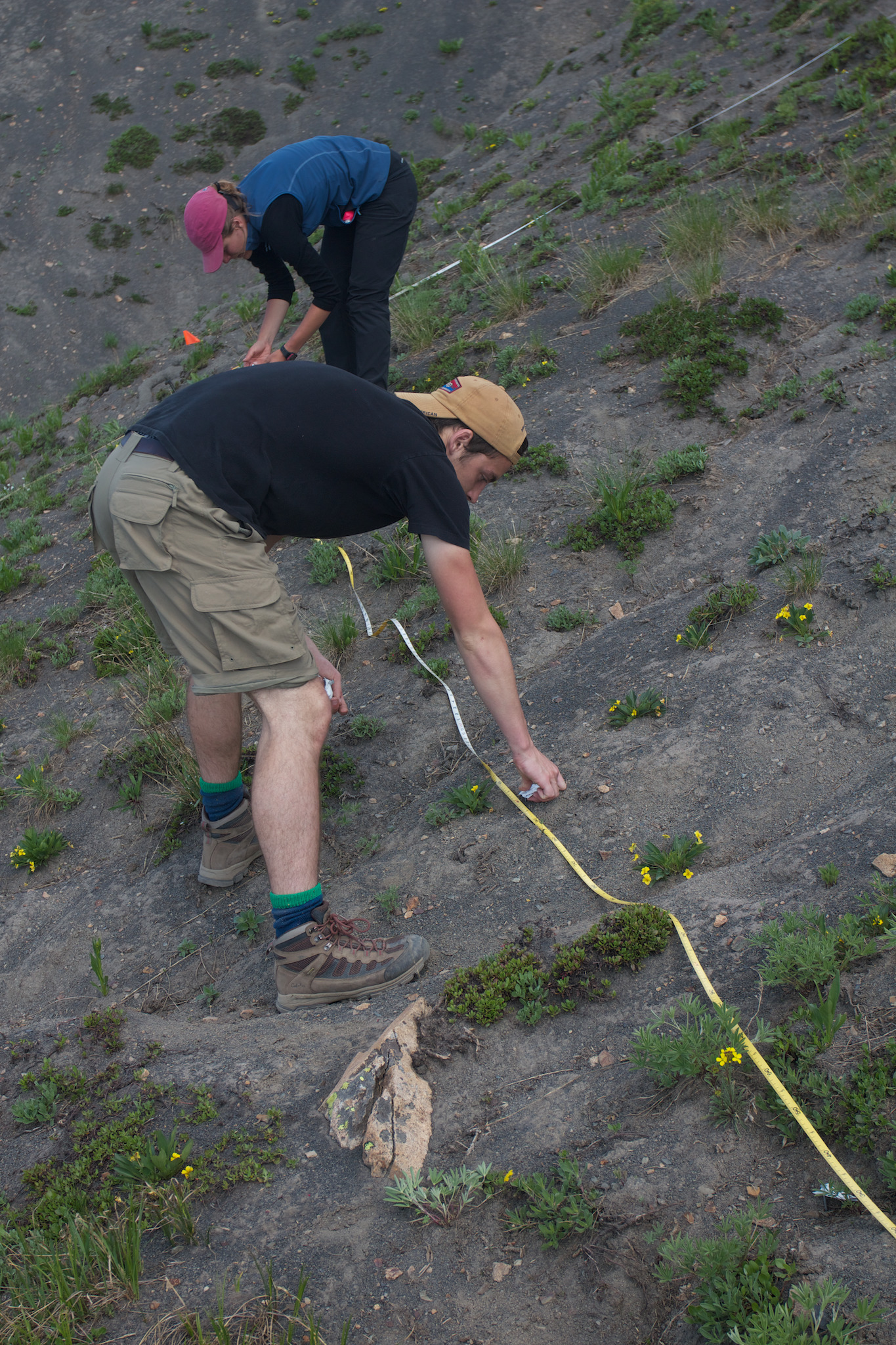Look around on any landscape and you will quickly notice that some areas appear more diverse than others. Not necessarily in species, but in function – compare the bare meadow in the foreground of this photograph to the more diverse wetland area, or to the even more diverse forest and understorey community in the distance. Regardless of the identity or number of species in each place, some areas are simply doing more different things. This kind of functional diversity is important for predicting the overall functionality of a community, as well as the redundancy and resilience a community to perturbations. With more diversity there are more ways to succeed, more ways to recover after perturbation, and potentially more stability as well.
But why are some areas more functionally diverse? There is increasingly good ecological theory for predicting the average phenotype of a species in a community – for example in the recent paper we published – but there is much less theory for explaining the variation around this average. One intuitive idea is that more environmentally heterogeneous environments should support more species, and that more species in turn yields more functional diversity. Stated another way, more environments might create more niches, which might then be filled by more ecological strategies. The first part of this argument – linking from environmental variation to species diversity – is well supported across taxa. But the second part of the argument – linking to functional diversity – has not been as well explored.
Two summers ago we started a student project to answer this question. The project was hosted at the Rocky Mountain Biological Laboratory, and was led by Jordan Stark, Lake Crawford, and Rebecca Lehman, with the support of Brian Enquist, my technician Rozalia Kapas, the NSF Research Experience for Undergraduates program, and my UK Natural Environment Research Council grant.
To address this question, we worked along several sites spanning a large elevation gradient that included long-term research sites managed by both Brian and myself.
The sites ranged from montane meadows to alpine screefields – a diverse array of vegetation types.
Within each site, we measured the microenvironment on a spatial grid pattern (with several nested transects) using both soil moisture probes and iButton temperature loggers. The loggers are small coin-shaped objects with small computers and thermometers built in – an impressive little bit of technology.
We waterproofed the loggers in reflective duct tape, then placed them within the vegetation along each of the transects. In the meantime, we collected plant material at each location, and measured a range of functional traits that seemed important to functional diversity – plant heights, leaf sizes, and so on.
Several weeks later, we came back and collected all the loggers. A few loggers were nibbled by animals, but nearly all provided useful information.
Analyzing all the data was a major effort over several months, but Jordan, Rebecca, and Lake did a great job. They were able to combine the microenvironment measurements with the functional trait measurements, and showed that in many cases, the strongest predictor of trait variation (here standard deviation in each of four traits, SD) is not the mean environment at that location, but rather the spatial or temporal variation in that environment (here, coefficient of variation, CV).
The results are somewhat variable based on the trait and the underlying process (for example, with water availability / soil moisture being more important in limiting plant height). However the overall conclusion is clear – more variable environments are associated with more variation in functional traits. The overall implication is that measuring environmental heterogeneity may provide an important way to predict functional diversity at larger scales, and to predict which communities may be more resilient or resistant to perturbations.
Please give the study a read – the journal link is here, and a direct PDF link is here. This study was led entirely by undergraduate or post-bachelors’ students, and is a great example of the kind of high quality science that can result from a summer project!










